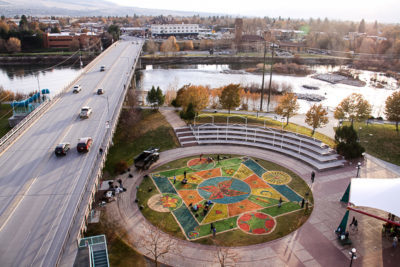
by Abby Hudson | Dec 7, 2021 | Uncategorized
If you’ve got outdoors-focused friends & family, and you have no idea what to get them for Christmas or birthdays, and you want to support small businesses & talented guides, here’s the short list of some gift ideas- all guide-made & guide-owned. Happy Holidays!
Funluvin’ Fleecewear by Kelli O’Keefe: Fun & functional fleece layers of all kinds. My Funluvin’ skirts are the most essential piece of my river wardrobe, and tons of funky patterns and styles make such a memorable gift. (Don’t forget to order yourself something, too.)
Funluvin’ Fleecewear (funluvinfleecewear.com) Instagram: @funluvinfleecewear
Kinship Leather Goods by Sarah Mallory: Handmade, detailed, and classic leather works. I won a Kinshop wallet in a salmon trivia contest and it’s the nicest wallet I’ve ever owned.
S. Mallory Goods (smallorygoods.com) Instagram: @kinshopleather
River Food by Courtney Modaff: If you’re looking for a gift for someone who loves to cook, these unique spice blends are the way to go. You can find River Food spices like Stir Fry Blend, River Rub, Idaho Pie, and many more in select stores across Idaho & Montana.
www.idahoriverfood.com, Instagram: @idahoriverfood50
CHECK OUT THE REDSIDE FOUNDATION’S ANNUAL GUIDE-MADE FAIR FOR MORE GIFT IDEAS– AND IF YOU’RE AN IDAHO OR MONTANA GUIDE, DON’T FORGET TO SIGN UP FOR THEIR ANNUAL SECRET SANTA GIFT EXCHANGE!
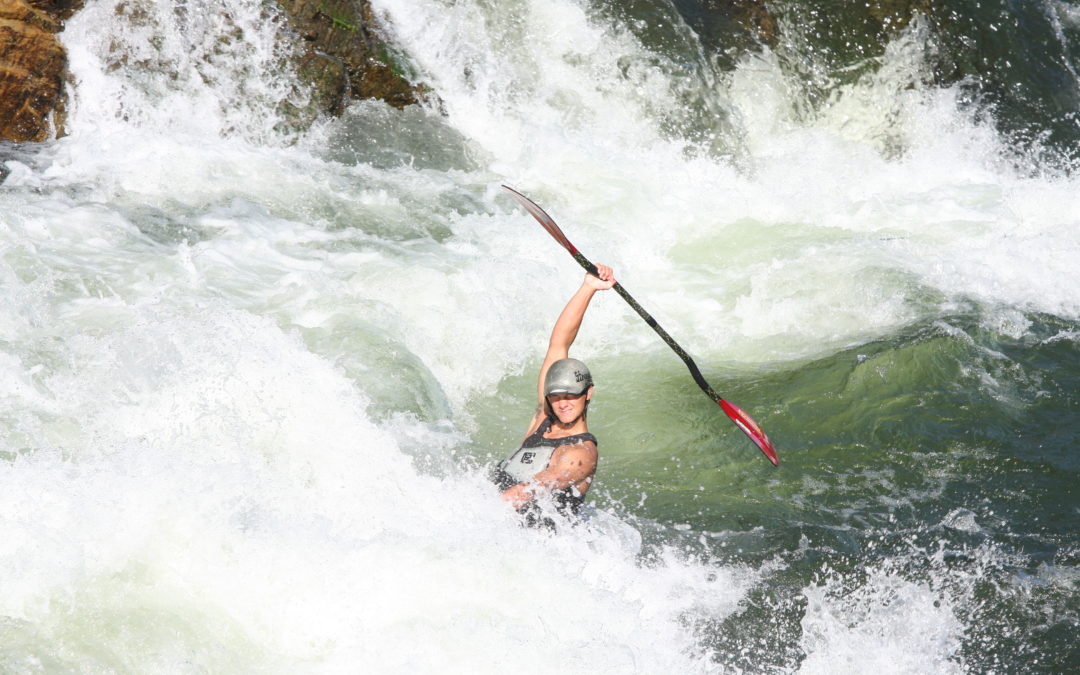
by Abby Hudson | Oct 15, 2021 | Uncategorized
This advice column is fairly standard and meant to give any rookie boater some helpful hints or reminders. First you’ll figure out the gear, the on-water safety, and the basic idea of getting yourself downstream. After that comes all the stuff that makes becoming a better paddler actually difficult: the mental endurance. I have no advice or how-to’s on the mental game of kayaking, only my own limited experience thus far.
For as long as I’ve been boating, kayaking has always been intimidating. There’s plenty of reasons, but I’ve found my biggest challenge in overcoming this fear of being Brand-New. It took a long time to get over the fact that learning to kayak would mean starting over. It would mean being a liability on the water, instead of an asset. And when it came down to actually putting myself in a kayak and getting over my fear of being Brand-New, it took years of self-persuasion.
Boating is hard. Every beatdown seems like it has only ever happened to you. Every rapid seems like life-or-death to some degree for a while. Every unfortunate encounter with duder-bro paddlers makes kayaking seem like it is quite a stupid endeavor. (the people who don’t go boating to experience the river itself, but the self-gratification of running the gnar- and getting the GoPro footage.) Boating is hard, and it is also such an epic way to learn your own limits and how to challenge those limits with purpose.
AMATEUR ADVICE HOUR: PRO TIPS FROM A TOTAL BEGINNER
#1) DIAL YOUR ROLL.
- Seemingly obvious, but a good place to start. Go to pool sessions, or the Jonsrud eddy, or Brennan’s, or anywhere. Fire off rolls until you’re dizzy. More time spent on practice equals less time spent upside down in combat. You will be a useless paddler if your roll isn’t solid, or if you don’t bother keeping it solid.
#2) DIAL YOUR GEAR.
- It is really important to have reliable gear that fits well. This goes for PFDs, helmets, drysuits, sprayskirts, paddles, etc.- and your kayak. Renting gear (hey Love Boat Library!) is a great affordable option if you’re just starting out and aren’t willing or able to invest in all the crap you need just yet.
#3) DIAL YOUR CREW.
- Knowing the right people and building a solid crew is probably the hardest part of getting into kayaking. The more you paddle, the more you’ll meet people you want to paddle with. Use your best judgement on who you trust to lead you down a new run, and remember to watch out for the safety of others as much as your own. Taking a swiftwater class is a great (but not cheap) way to sharpen your own knowledge, especially if you don’t have a ton of prior river experience.
#4) DRESS FOR THE SWIM.
- It’s pretty critical to have a general understanding of water levels and temps on any given river, and always dress for that swim. A long swim or prolonged rescue can be dangerously cold, even on a bluebird day.
(Like I said, this advice column covers the absolute basics. The rest is up to you!)
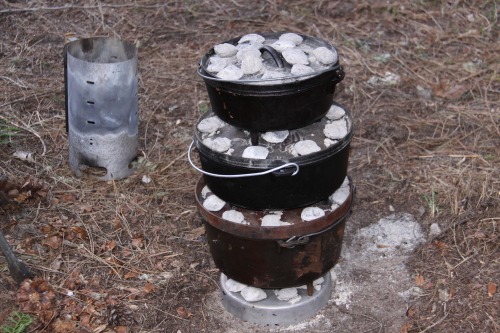
by Abby Hudson | Aug 24, 2021 | Uncategorized
It’s easy, it’s a hot dish, and anything tastes good after a cold day on the water.
(Serves 8-10)
Ingredients
- 1 pound boneless skinless chicken breasts (chopped)
- 3 cans great northern beans (14.5oz each)
- 2 cans chicken broth (14oz each)
- 1 can chopped green chilis (4oz)
- 1 cup shredded Pepperjack cheese
- 1 jalapeno pepper
- 1 yellow onion
- Some garlic, some olive oil, and whatever is in your spice kit!
Directions, sort of
- In a dutch oven or large pot on medium heat, cook chicken and onion until lightly browned. Add garlic, spices, green chilis and broth. Bring to boil, then simmer.
- Mash 1 can of beans and add it to the mix. Stir it up, throw in the other 2 cans of beans, and let the whole dish sit on low heat for 20-30 minutes.
- Serve with lots of cheese & diced jalapeno and enjoy!
Bonus Tricks
- Add bouillon cubes or your own homemade bone broth for a lil’ extra flavor/texture.
- Make dutch oven cornbread (store-bought or home recipe.) Toss in some green chilis and cheddar cheese and you might convince your pals you know how to cook!
Other cold-weather meal ideas:
- Posole (if you’re seeking a more involved prep & quality meal)
- Mac & cheese w/ bratwursts (if you would rather sit by the fire and drink a beer)
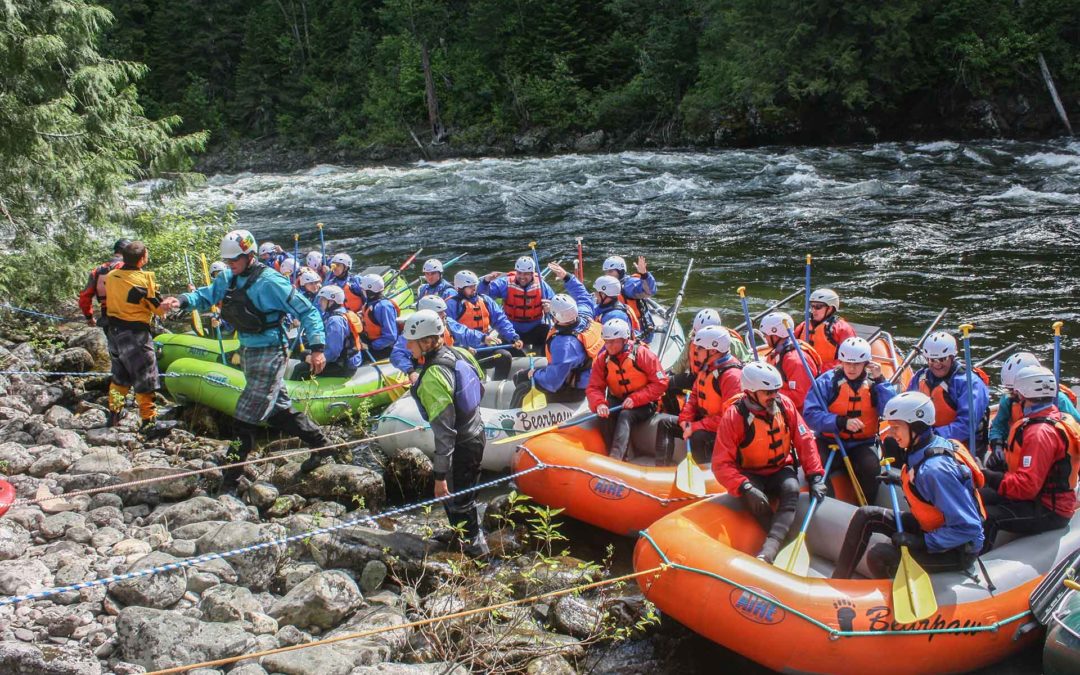
by Abby Hudson | Jul 2, 2021 | Uncategorized
Rivers are a privilege. We are lucky enough to share these wild and beautiful places with one another, and treating the river and our fellow boaters with respect is necessary in order to keep these places wild and beautiful. Be knowledgeable about the Leave No Trace principles, the river-specific regulations, water levels, and basic river etiquette.
AT THE BOAT RAMP
- Designate a concentrated space for your boats and gear, and make room for other groups to use the boat ramp.
- Do not spread out across the entire put-in area or block the boat ramp with vehicles and trailers.
- Do not put a boat on the ramp until you’re ready to move with purpose to get the boat in the water.
AT CAMP
- Dial your gear. This includes all the required trash and human waste disposals, firepans and fire blankets, and food storage systems. These regulations can vary by river or seasonally.
- Know your campsites and plan ahead. Do NOT last-chance camp at an undeveloped site, and concentrate your use within the parameters of a developed camp.
- Be aware of microtrash! Food particles, wrappers, zip ties, etc. Microtrash destroys the quality of river camps and degrades the habitat and its species.
ON THE WATER
- If you come across another group on the water, sharing the space in a friendly manner matters. Whether it’s a nod or wave, or a quick chat about camps, rapids, the weather, whatever, it matters to be polite and welcoming out there.
- Look upstream before your group pulls out of an eddy. If there’s another group coming, it’s worth letting them pass and giving them space.
- Avoid fishing lines on other boats. That being said, avoid casting directly in front of a boat in the current.
- If you are passing another group, communicate with them and pass efficiently and in a calm stretch of water.
- If another group wants to pass you, it’s worth pulling into an eddy and letting them pass through efficiently, and in a calm stretch of water.
- If you come up on a risky scene, pull over and assess.
- If you are the risky scene, send one person upstream to signal to other boaters coming down to pull over and assess.
- Treat the river herself with ultimate respect.
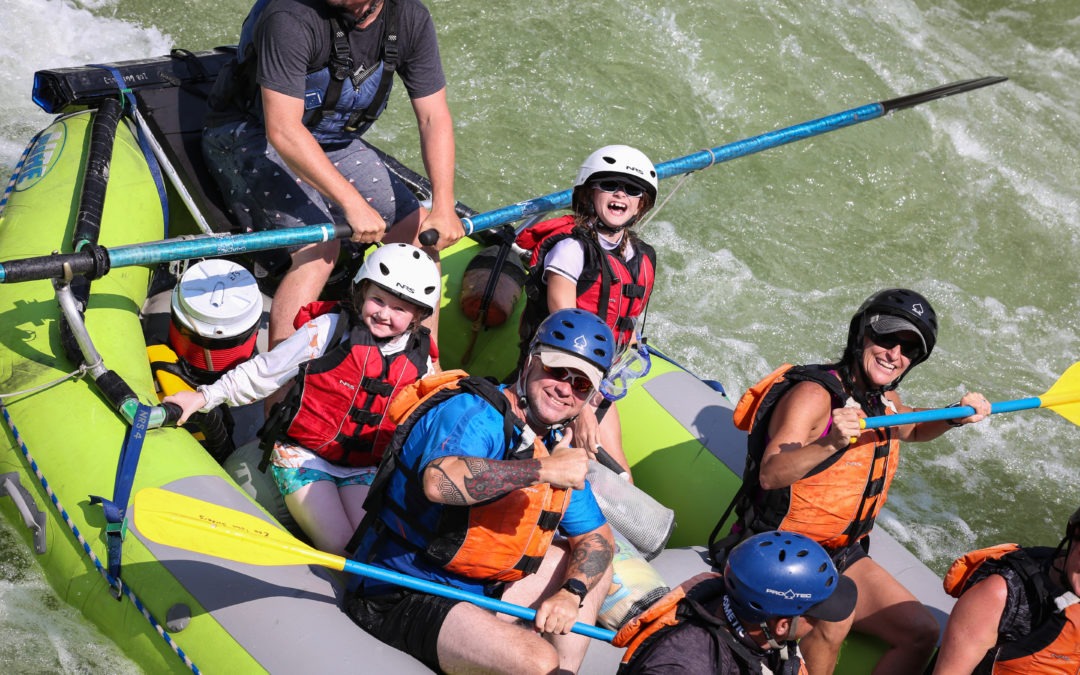
by Abby Hudson | Jul 2, 2021 | Uncategorized
If you are taking your kiddos on their first river trip, packing everything you might need out there can present a major challenge. As someone who is NOT a parent yet, these What-To-Bring lists are very introductory, and come from overhearing LOTS of parents say “Oh, we should have brought that!” These lists are also subjective based on weather, temperature, and trip length.
Open to suggestions on this one.
THINGS EVERY PARENT SHOULD BRING ON A DAY TRIP:
- The kiddo’s favorite snack.
When kids get hungry, it can be no fun for anybody. When kids have their favorite snack on hand, it can be the best day ever.
Sun hats, sun shirts, sun protection of all kinds. A sunburned kid is often a grumpy kid, rightfully so. Kiddos who are SPF-soaked are much more likely to be whitewater-stoked.
Even if you’re just heading to the river for the day, staying hydrated is still the most crucial ingredient for a great adventure.
Heel strap, waterproof, comfortable.
THINGS EVERY PARENT SHOULD BRING ON A MULTI-DAY TRIP:
- Again, snacks are always a good idea.
This one is especially important if you’ve got a picky eater, or dietary concerns. For long days on the river, having that extra pick-me-up for the little ones can be a lifesaver.
- Again, extra sun protection.
Hats, sun shirts, and anything else a kiddo may leave out to dry on a rock at lunch and not realize it’s missing until you’re at camp.
- Cold-weather camp layers.
If you’re on a high-elevation river for multiple days, nights will be surprisingly cold – even in July. Bringing a few warm layers (ideally fleece or wool) for kids to bundle up is essential. Good camp shoes (dry sneakers, booties, flip flops) are also a must-have.
- For kids that take any daily meds.
It’s a good idea to split your supply into 2 locations- usually one set with your personal gear, and the other stashed safely into a first-aid kit or cooler. (Especially if meds need to be refrigerated!)
With all that in mind, it’s important to remember that less is more out on the river, too. It’s hard not to overpack and it’s hard not to forget something, especially with kids involved. For first-time river trippers, you figure out pretty quick what you consider essential on the river, and what you could probably leave at home next time. Just be prepared for the We-Should-Have-Brought-That Moment on every river trip, ever.





